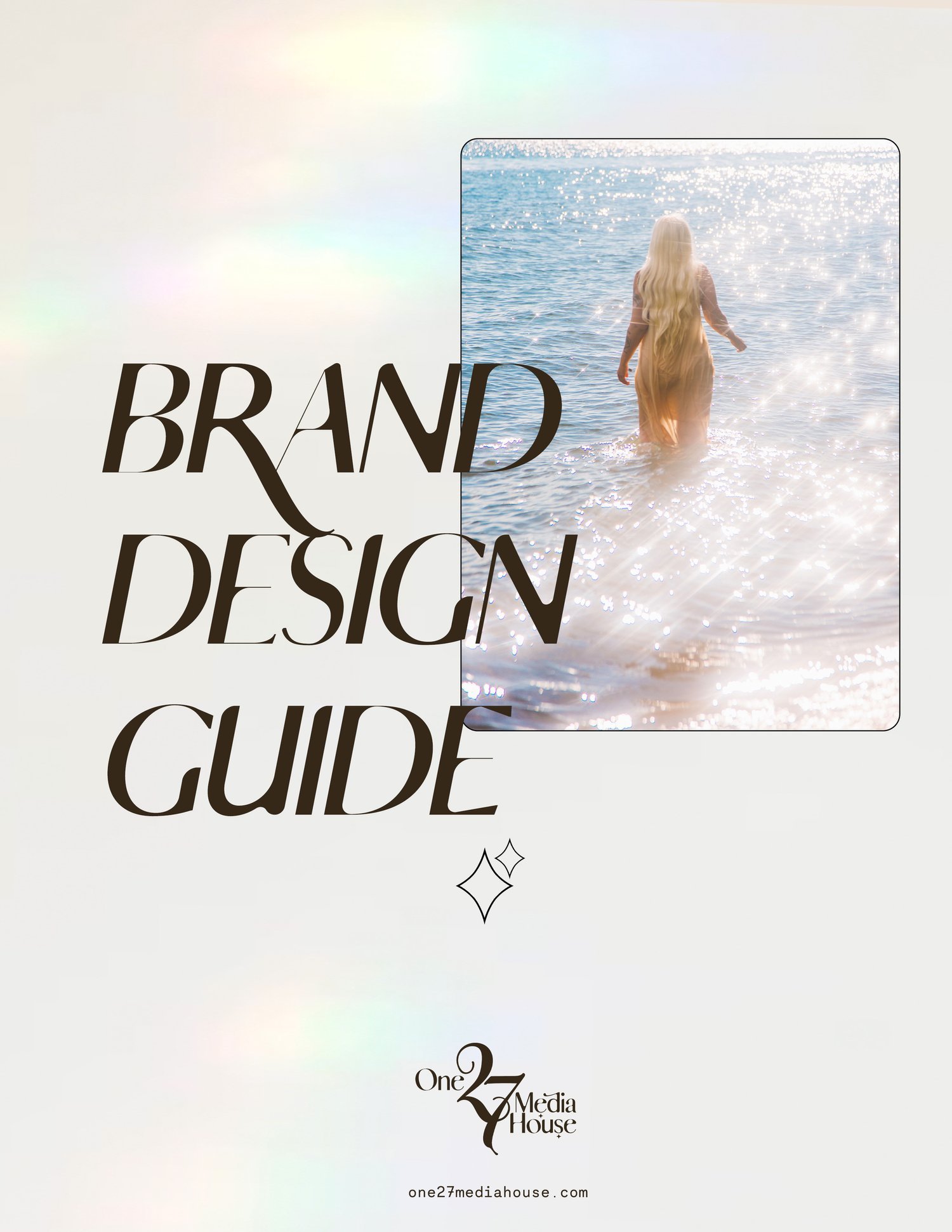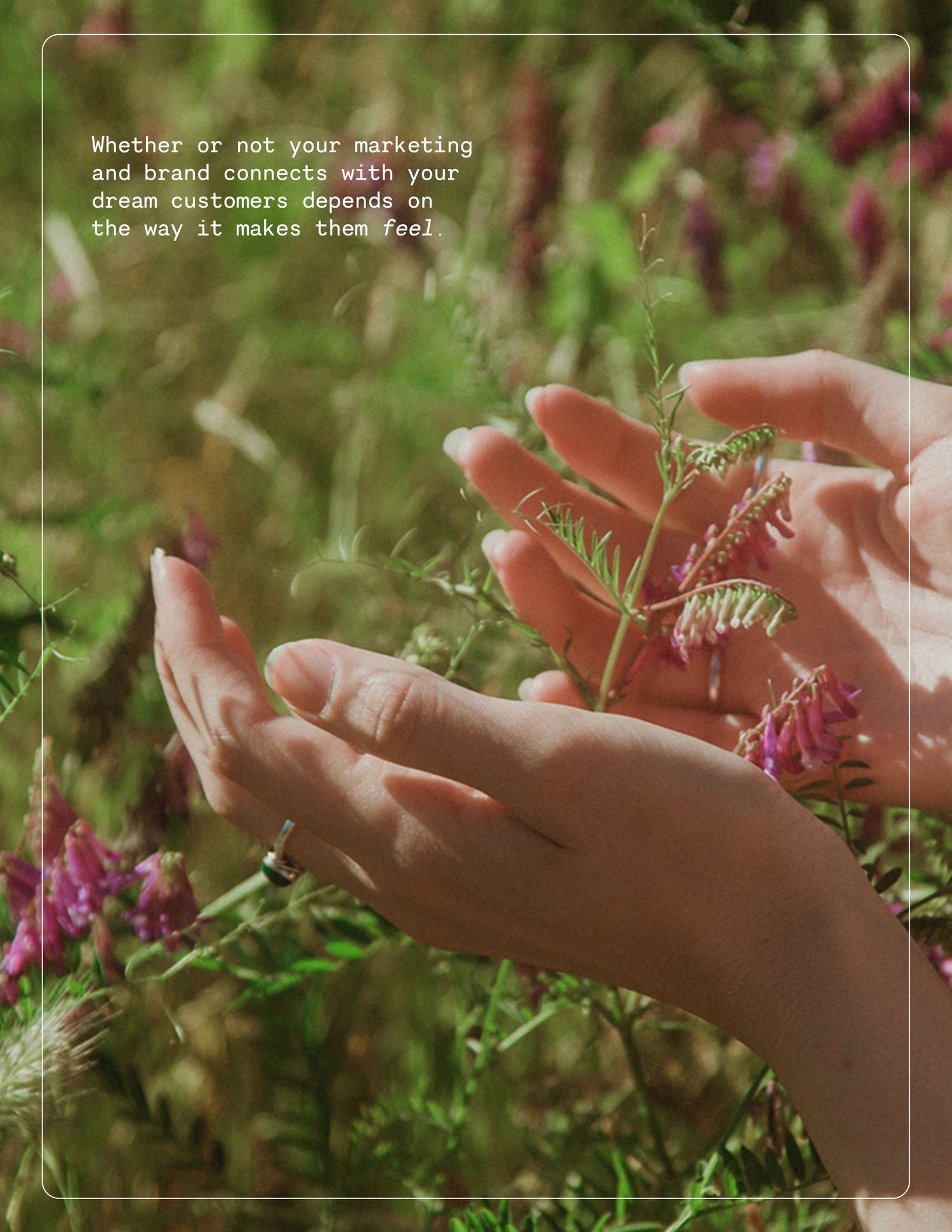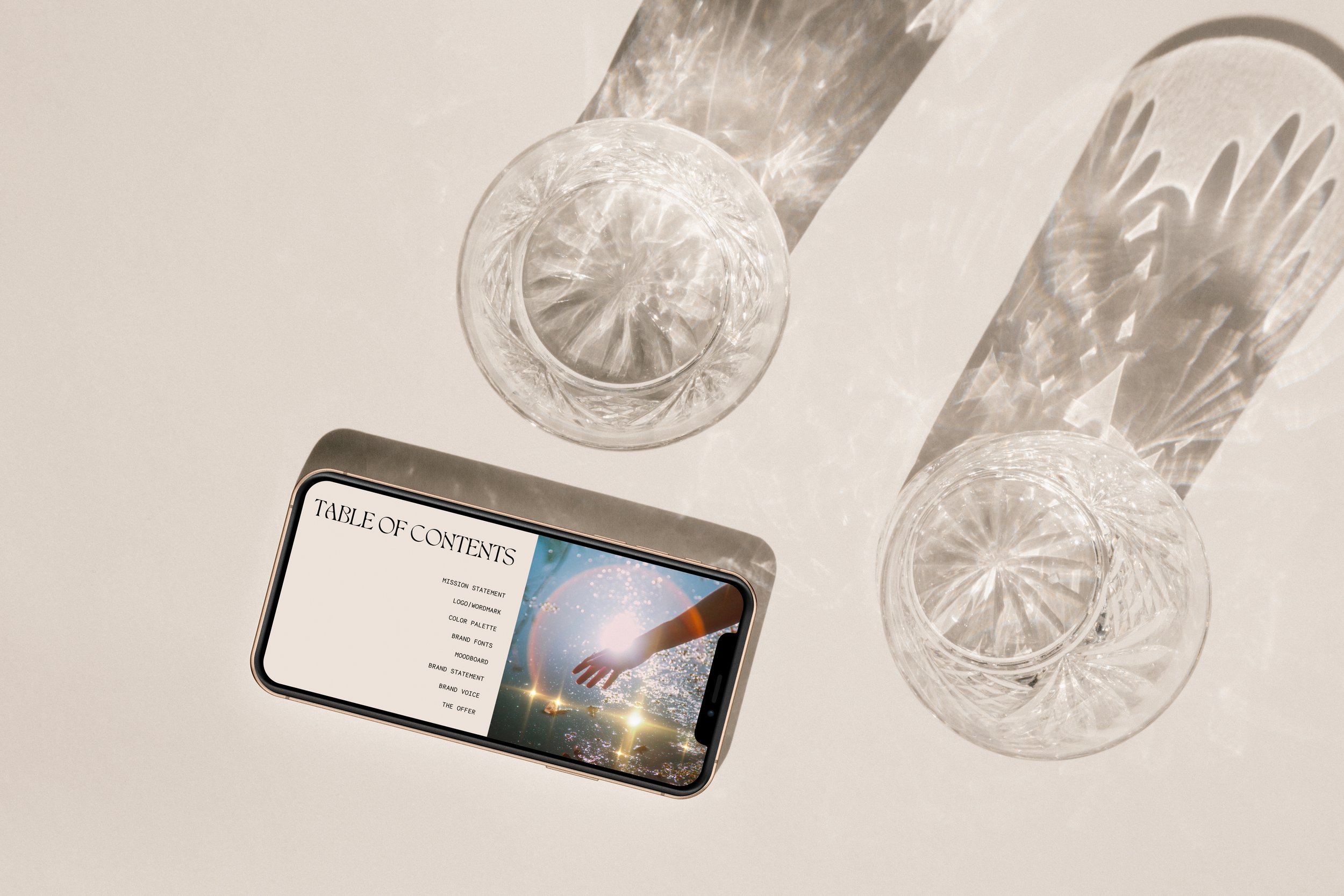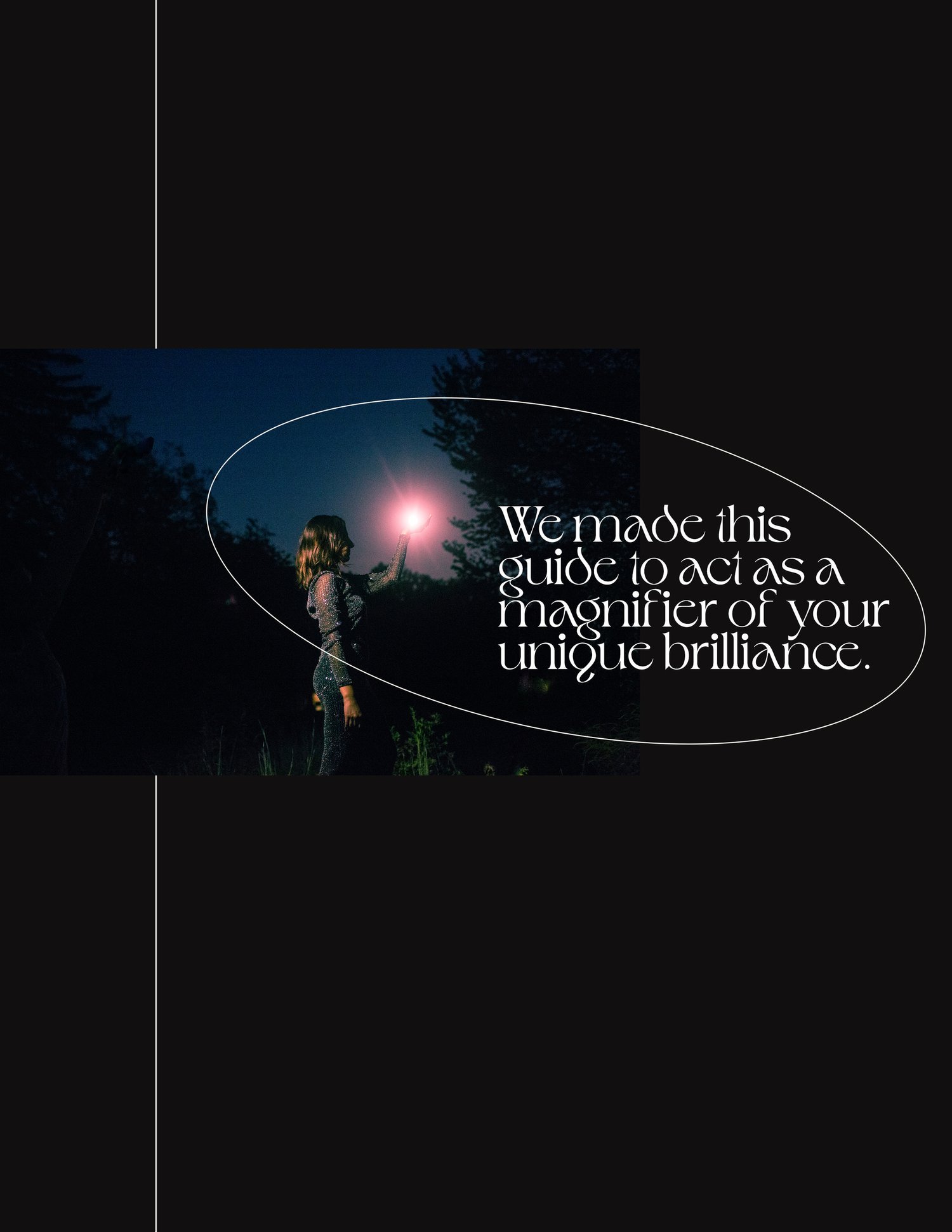How to Create an Effective Mood Board: A 3-Step Guide
A mood board is the clearest way to communicate the look and feel of your ideal vision as a whole, making mood boards an incredibly important tool for any creative project.
Mood boards can help you find the connections and throughlines in the visual elements and styles you prefer. The process of putting one together usually sparks further creativity and research, which helps you to gain a deeper and more defined understanding of your preferences and brand’s potential.
Having a physical image that embodies the energy of your brand's next-level identity is the first step in making that next-level embodiment happen. You can return to your mood board through time for inspiration, to make adjustments as your brand evolves, and to make sure your brand visuals consistently and cohesively reflect your ideal vibe.
In this post we’ll get into the details of how to create a beautiful and highly effective mood board for your brand.
Dreamy, magical, journal inspired author website mood board (none of these images are our own - images sourced via Pinterest.)
Final website design - AP BASTIAN website
Mood boards are one of the simplest and most effective first steps in any visual content creation process.
Let’s start with the basics - defining the what & why.
What is a mood board?
A mood board is a selectively curated collection of images that all work together to emote a specific style and feel that you want to convey.
The way the board makes you feel reflects how you’d like your customers to feel when they encounter your brand.
We see mood boards as a magical intention-setting tool. ✨ Creating a mood board is one of the first steps in bringing a vision from the creative, imaginative, etheric realms into physical reality.
Why make a mood board?
Mood boards are a powerful step in the creative process. They help you to accurately communicate the visual feeling you want to achieve and be a sort of north star for everyone on your creative team.
Through the process of making a mood board, you’re able to try out different elements and refine your vision until it perfectly reflects the exact feeling you’d like to achieve.
Exploring inspiration will spark new ideas and help you see things and make connections in new ways, opening the door for further creativity and innovation.
A mood board serves as a central, agreed-upon document for creative direction. It steers the visual direction of the project and saves a lot of time by helping everyone involved with the project to stay on the same page.
When do you use a mood board?
Use a mood board anytime you want to identify or convey a creative vision!
Here are ways we use mood boards regularly with our clients:
Exploring Brand Identity
Planning Personal Brand Photoshoots
Planning Video Productions
Website Design Projects
Almost every creative project moves along with more ease and better results when it involves an intentionally crafted mood board. We get the best results when there’s a good balance between collecting and intentionally curating inspiration, then being fully open to the creative flow of the moment.
How to Create a Mood Board
1. Make an Inspiration Folder
Compile inspiration from anywhere you see it.
Save images to a folder on your computer, phone, or Pinterest board. Look for images, colors, and patterns/textures that reflect the style and mood you’d like to achieve. The inspiration doesn't need to be directly related to your industry. What’s important is that the imagery expresses the style you're drawn to and the way your brand will make people feel.
Places to find inspiration online:
Pinterest
Create a new Pinterest board - make it a private board if you'd like. Search different variations on your keywords and brand words.
Pin images that align with your brand’s personality, brand words, and the feeling you want to brand to convey. Once you start populating your Pinterest board, the algorithm will start suggesting related pins below. Pinterest can be an inspirational rabbit hole! Spend some time exploring whatever you're drawn to, trying out different keywords, and pinning what you love.
Social media and elsewhere online
If you're inspired by images or accounts on social media, screenshot and save the best of those into your inspiration folder. Also, screenshot your favorite websites, blogs, and any other imagery, then save that to your main inspiration folder. Websites like Unsplash, a stock photo website, and Creative Market are great places to search your brand’s style words for further inspiration.
Where can you find inspiration in everyday life?
Inspiration can be found everywhere you go!
Look around your home office, city, etc. Is there anything that feels spot-on and super inspiring to your brand visuals? Maybe a retro-striped bus on your morning walk, the modern decor of a local plant shop, or the unique design of an airport. Take a photo & add it to your inspiration folder.
Here are some places to look for inspiration if you don’t know where to start:
magazines & books
window displays
album covers
billboards
architecture
gardens
street fashion
movies
home decor
Spring flowers and astrology inspired for an herbal apothecary
and magical shop website mood board (none of these images are our own - images sourced via Pinterest.)
Final website design - Flower Power website
2. Curate your Collection
Light and shadows, flowers, glowing skin
mood board for a luxury esthetician website
(none of these images are our own - images sourced via Pinterest.)
Once you feel like there’s enough to work with in your inspiration folder, start sorting out your absolute favorites.
See what they look like together and remove anything that doesn’t 10,000% fit. Keep adding and curating images from your inspiration folder until you have a collection of 8-10 images that you feel absolutely, completely encapsulates all the threads of your inspiration.
When you look at all of the images together as a whole, they should fully express your chosen aesthetic.
Final website design + photo/video - Debra Krueger Skin Studio website
3. Create your Moodboard
Create a collage of your top inspiration images. You can use Canva, Photoshop, GoMoodboard.com, the Freeform app, or any other software or method that works for you. You can even use Squarespace to create mood boards!
(Sidenote: I LOVE using Squarespace for this. If you have an existing brand and Squarespace website, developing your mood board in the context of your website’s branding is a whole other level of helpful!)
Move the elements around into different shapes and layouts. Try switching out images to create multiple combinations. Notice if certain elements look really nice together, or if one might be better swapped out for another. Remove absolutely everything that doesn’t feel like a perfect fit. Less is often more in this case.
Identify a set of 3-5 brand colors or project colors from the mood board. You may have started with specific colors as inspiration, or you may notice a common color theme within the board.
When you look at your final mood board, you should feel a major YES!
OUR FAVORITE TOOLS
Pinterest
Canva
GoMoodboard
Freeform app
Notion
Adobe Suite
Squarespace
5 Quick Tips for Creating an Effective Mood Board
Experiment with multiple layouts.
Move the images around to see how they look and flow in different arrangements. Sometimes seeing two or three images all next to each other sparks a new idea altogether or helps to refine a concept further.Expand beyond images.
A mood board doesn’t have to be strictly photos! Experiment with adding different examples of typography/fonts, illustrations, sketches, textures, handwriting, and other design elements. Your brand personality and tone of voice should be clear when you look at the final board, so include anything that helps express it to the fullest. Our One27 mood board even comes with a playlist!Give yourself guidelines.
Not sure where to start? Pick a few brand words or brand colors to begin the process and see where that leads. Setting boundaries and limitations in the creative process can be super helpful to get started.Be flexible.
Mood boards are fluid and ever-changing, just like humans and other living beings. You’ll probably need to revise and refine through time, as your project or business grows and evolves.Define the overall theme.
Try to determine a clear concept or theme for the board, to keep everything cohesive and focused. Make sure that the feeling the mood board evokes is reflective of your brand’s values, voice, and goals.
Whether you're preparing for a photoshoot, designing your brand or website, or working on a long-term business vision, a well-crafted mood board will take your efforts to the next level! Let your intuition and curiosity guide you as you dive deeper into your unique vision and potential.
Ready to dive deeper into your branding?
We’ve created a DIY brand design guide for you!
Brand Design Guide
By getting to know your brand’s roots, your personal magic, and the underlying why behind all of it, you’ll create a strong foundation for your business and brand identity. This guide is a powerful tool to create a brand aligned with your deepest values and more expansive dreams.
LEARN MORE ABOUT THE BRAND DESIGN GUIDE















